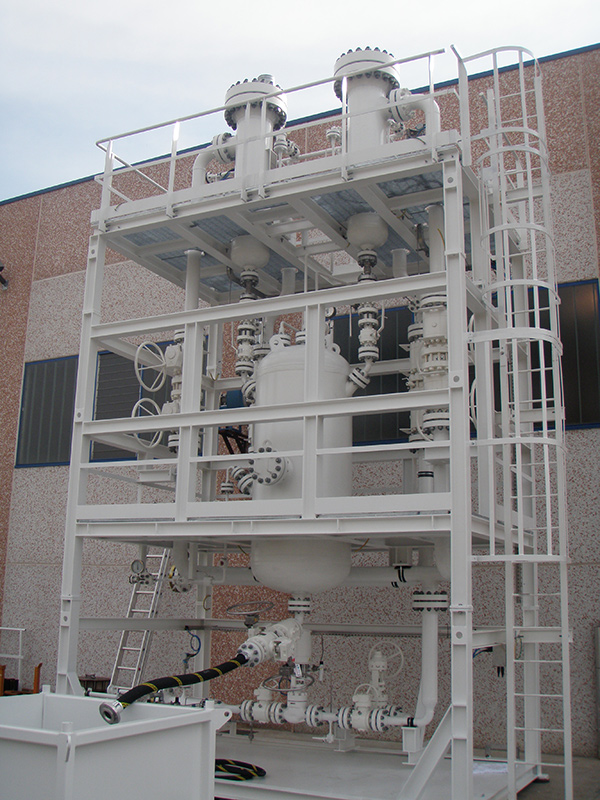Desanding hydrocyclone allow the removal of solids from gas, condensate or produced water streams, ensuring that downstream equipment is protected from erosion and blockages.

Wellhead Desanding
The Wellhead Desanding Hydrocyclone was developed to provide a compact solution for the solids removal upstream of the production choke and is typically designed for ranges from 5,000 to 15,000 psi.
These wellhead desanding Hydrocyclones remove solids from gas or oil stream upstream of the main production units and allows higher sand free production rates while eliminating downhole sand control measures.
The great benefit of solids removal upstream of processing equipment is the cleanliness of the separated sand. It is important to note that sand is typically water wet in the reservoir, and will remain so unless allowed to settle in production separators for extended periods between sand-jetting operations. During these long retention times, the sand is subjected to various interfacial modifying chemicals and processes that promote oil adsorption onto the solids. Removing the sand ahead of the separators prevents oil adsorption and lead to cleaner separated sand.
Desanding Hydrocyclones
Based on increased centrifugal forces, the Pemtec Desanding Hydrocyclone removes suspended solids from Produced Water, ensuring that downstream equipment is protected from erosion and blockages.
These hydrocyclones are designed to handle harsh conditions and are constructed of wear resistant alumina ceramic and nitride bonded silicon carbide.
Due to the high specific gravity difference between water and solids, lower g-forces need to be generated to achieve high separation efficiency and typically a maximum of 2 bar is required to meet client requirements. Removal of particles greater than 10-15 microns can typically be achieved.

Discover The Future
Smart designs for removing oil and suspended solids from produced water
